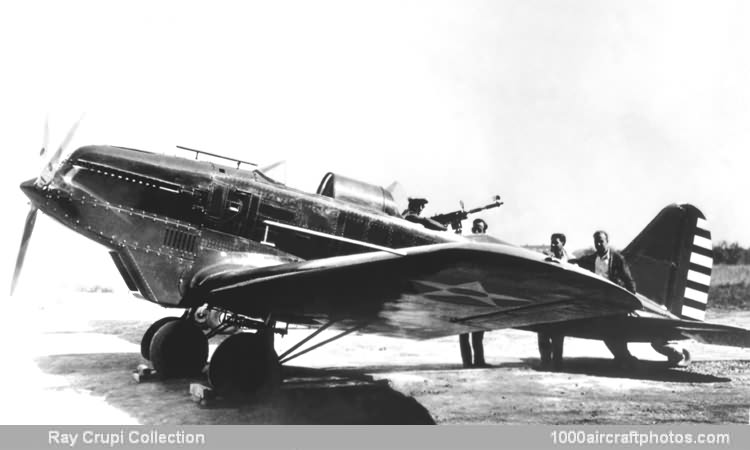Being most impressed with the good performance of its versions of the Vega (Y1C-12 and Y1C-17) and Altair (Y1C-23), notably their top speed, the USAAC was prepared to make a drastic change in its policy and to consider acquiring a low-wing monoplane fighter with retractable landing gear. Yet, as its budget had been curtailed as the result of the Depression, the War Department was not in a position to order prototypes. To circumvent this difficulty, Detroit-Lockheed undertook to develop privately the prototype of a two-seat fighter based on the Altair.
Accordingly, a mockup was completed in March 1931 under the supervision of Robert Woods and construction of a prototype started. Bearing the Wright Field Project Number XP-900, the experimental fighter combined a slim metal fuselage and metal tail surfaces built by Detroit Aircraft, and Altair wooden wings built by Lockheed in Burbank; final assembly and initial testing of the aircraft were undertaken in Detroit by the parent company.
The power plant was a 600 hp Curtiss Conqueror V-1570C (military designation V-1570-23) twelve-cylinder liquid-cooled V-engine driving a three-blade propeller. The crew of two, pilot and gunner, was housed back to back in enclosed cockpits, and the aircraft was armed with one 0.30 in (7.62 mm) and one 0.50 in (12.7 mm) synchronized machine gun in the nose, and one flexible 0.30 in (7.62 mm) machine gun firing upward and to the rear.
At the conclusion of brief manufacturer's trials conducted in Detroit during the summer, the XP-900 was delivered to Wright Field on September 29, 1931. At that time the aircraft was purchased by the USAAC and designated YP-24 (s/n 32-320). Tested as a potential replacement for the Berliner-Joyce P-16, the YP-24 proved to be not only 40 mph (64 kmh) faster than that two-seater but also 20 mph (32 kmh) faster than the Curtiss P-6E single-seater, then the USAAC's most important fighter.
Satisfied with the potential of the Detroit-Lockheed prototype, the War Department awarded a $250,000 contract for five Y1P-24 two-seat fighters and four Y1A-9 attack aircraft. The latter were to differ from the fighter version in being powered by a V-1570-27 rated at a lower altitude and carrying heavier forward-firing armament plus bombs.
As the USAAC's first low-wing monoplane fighter with retractable landing gear and enclosed cockpits, the Y1P-24 seemed to have a promising future. However, on October 19, 1931, the YP-24 prototype was lost when its pilot, Lieutenant Harrison Crocker, was ordered to bail out instead of attempting a wheels-up landing after the landing gear control lever had broken off. The problem was a relatively minor one and could have been quickly fixed.
Unfortunately, for reasons unrelated to the YP-24 accident, the Detroit-Lockheed Corporation could no longer avoid bankruptcy and could not undertake manufacture of the Y1P-24s and Y1A-9s. The project was tentatively shelved until after Robert Woods had joined the Consolidated Aircraft Corp. The Detroit-Lockheed design was then developed into the all-metal Consolidated Y1P-25 which, in turn, gave place to the Consolidated P-30/P-30A series (PB-2/PB-2A). Production by the latter company included one Y1P-25, one Y1A-11 and fifty-eight P-30s, P-30As and A-11s."
